- JST Home
- /
- Strategic Basic Research Programs
- /
 PRESTO
PRESTO- /
- project/
- Quantum state control and functionalization/
- [Quantum Functionalization] Year Started : 2018
[Quantum Functionalization] Year Started : 2018
Koji Azuma
Theoretical research for the quantum internet
Researcher
Koji Azuma
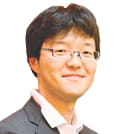
Distinguished Researcher
NTT Basic Research Laboratories (NTT BRL)
NIPPON TELEGRAPH AND TELEPHONE CORPORATION
Outline
This research project focuses on 1) seeking of theoretical limits on quantum internet protocols, 2) proposals of practical quantum internet protocols and 3) exploration of new application of the quantum internet, towards building theory of the quantum internet. Through unveiling a whole picture of such a big paradigm for the quantum internet, we clarify fundamental building blocks necessary for composing the quantum internet, which paves a proper route for technological development of our field.
Hiroshi Imada
Spatiotemporal measurement and control of coherent intermolecular energy transfer
Researcher
Hiroshi Imada
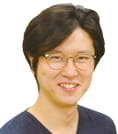
Senior Research Scientist
Cluster for Pioneering Research
RIKEN
Outline
Coherent intermolecular energy transfer has been considered to play a crucial role in photosynthesis and extensively studied mainly using optical spectroscopy. However, the spatial resolution of conventional optical spectroscopy is limited to a few hundred nanometers and thus cannot reveal the details of the quantum mechanical energy dynamics. In this research, a novel spectroscopy with an extreme spatiotemporal resolution will be developed by combining scanning tunneling microscopy (STM) and ultrafast laser techniques. By applying the spectroscopy to atomically-precise molecular systems constructed by STM manipulation, this research aims to achieve real-space and real-time tracking and control of the coherent intermolecular energy transfer.
Yasutomo Ota
Hybrid integrated silicon quantum photonics
Researcher
Yasutomo Ota
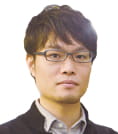
Associate Professor
Faculty of Science and Technology
Keio University
Outline
This research explores the hybrid integration of quantum nanophotonic elements on silicon photonic circuits as a novel route for scalable photonic quantum information processing. We investigate hybrid integration using transfer printing, which enables the pick-and-place assembly of solid-state quantum elements onto the circuits, irrespective of material choice. This approach largely mitigates difficulties existing in conventional hybrid integration processes of solid-state quantum devices, paving the way for silicon quantum photonics circuits incorporating cutting-edge quantum elements of any materials. Leveraging the power of silicon photonics, we venture into the construction of highly-functional quantum photonic circuits and their modularization, and showcase a promising direction of integrated quantum photonics.
Takafumi Ono
Development of a large-scale quantum simulator using nonlinear optical effects
Researcher
Takafumi Ono
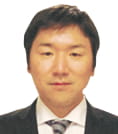
Assistant Professor
Faculty of Engineering and Design
Kagawa University
Outline
Silicon photonics is a promising platform for realizing large-scale quantum photonic devices because of the component density, mature fabrication processing, and compatibility with both telecom optics and CMOS electronics. In this project, we will develop a large-scale quantum simulator using silicon photonic circuit equipped with an optical nonlinear device. And then we will try to solve a difficult problem with our quantum simulator.
Yoshifumi Nakata
Quantum pseudorandomness towards sustainable development of quantum technology
Researcher
Yoshifumi Nakata
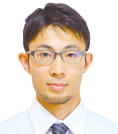
Assistant Professor
The Graduate School of Engineering Photon Science Center
The University of Tokyo
Outline
Pseudorandomness is often very useful in various information processing, such as computation, communication, and cryptography. This is true even in quantum information processing, where the pseudorandomness is called quantum pseudorandomness. Quantum pseudorandomness is known to be extremely powerful resource, allowing us to outperform classical counterparts in a number of protocols, but is also known to be difficult in practice to realize by currently available experimental techniques. This research aims to explore, from a theoretical approach, experimentally-friendly implementations of approximate quantum pseudorandomness and to propose their applications towards a sustainable development of quantum technology.
Maria Fuwa
Quantum Control of mechanical oscillator levitated using superconducting circuits
Researcher
Maria Fuwa

Assistant Professor
Faculty of Science
Gakushuin University
Outline
Integration of opto-electric-mechanical quantum interactions into the field of optical science has the potential to revolutionize its quantum functionalities. However, quantum mechanical oscillators in the ground state with electromagnetic waves in the optical regime remains and ambitious gateway. This research aims to realize this goal: cool to quantum ground state, a mechanical oscillator levitated using superconducting circuits.
Ryuhei Mori
Design of constant-time quantum algorithms
Researcher
Ryuhei Mori

Assistant Professor
School of Computing
Tokyo Institute of Technology
Outline
There are many difficulties for realizing practical quantum computers. Especially, due to the short time period for preserving quantum states, we cannot use quantum algorithms taking long time. In this research proposal, constant-time quantum algorithms are designed and analyzed. Furthermore, we explore the effects of error on the proposed quantum algorithms by using classical simulation with GPU computing.
Atsushi Yamaguchi
Spectroscopy of atomic nucleus towards a nuclear clock
Researcher
Atsushi Yamaguchi
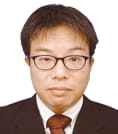
Senior Research Scientist
Cluster for Pioneering Research
RIKEN
Outline
This research aims to develop a technique for spectroscopy of atomic nucleus towards a nuclear clock, which is an accurate frequency standard based on the resonance frequency of the nuclear transition. Novel applications of the nuclear clock will also be explored.













